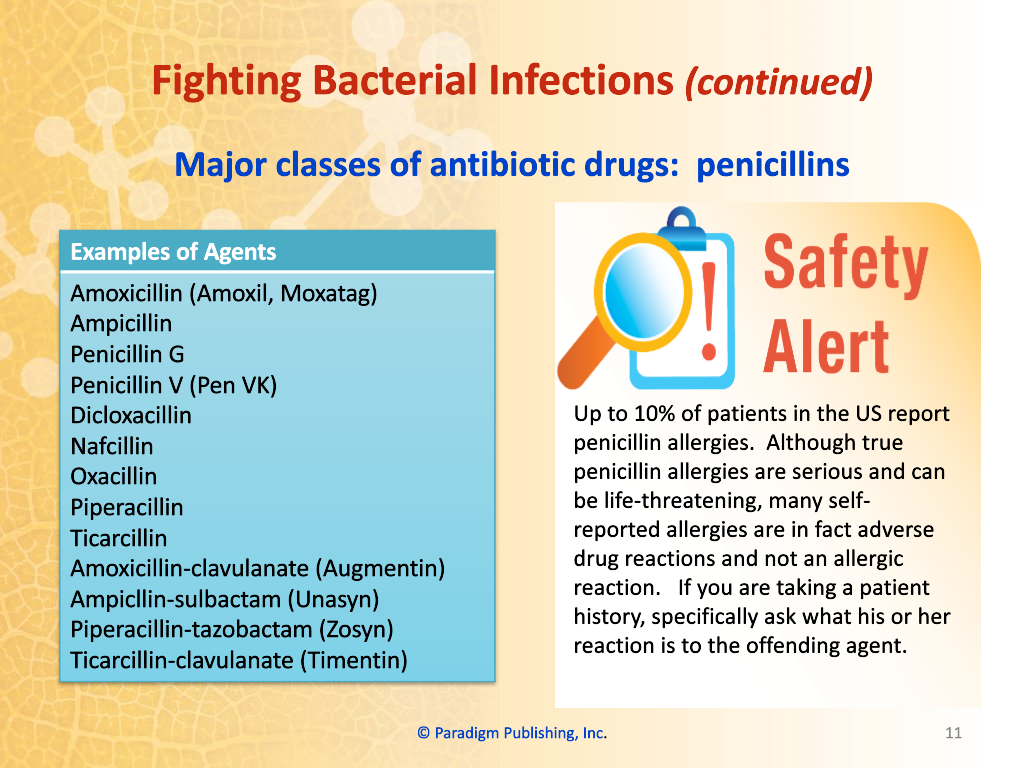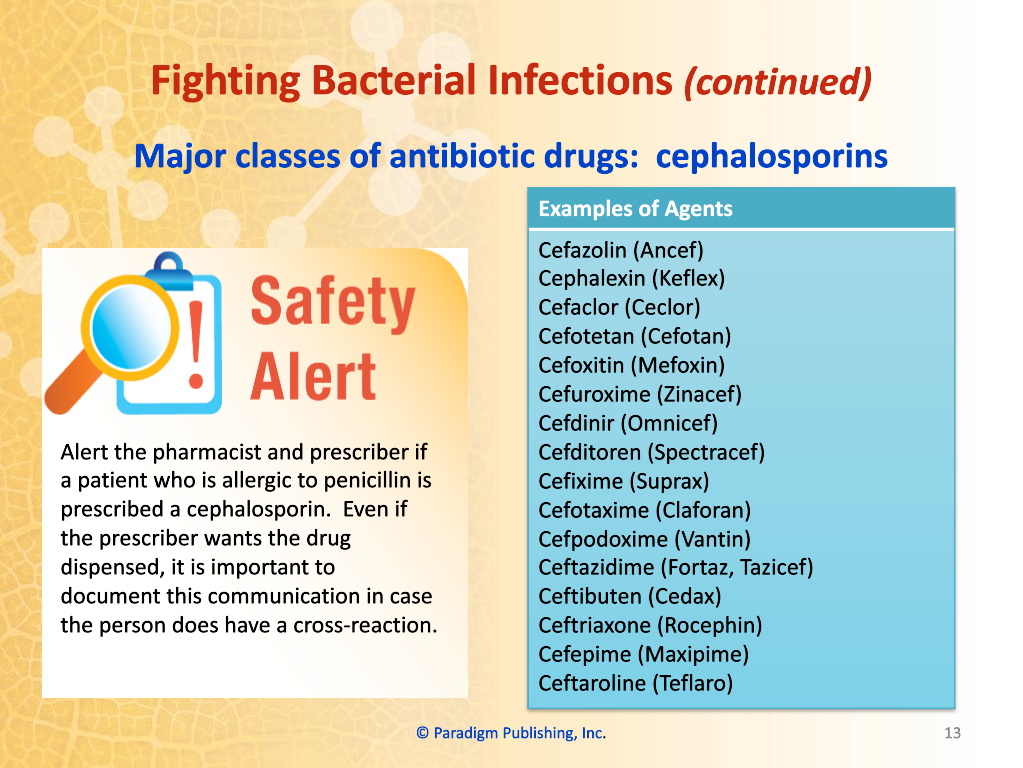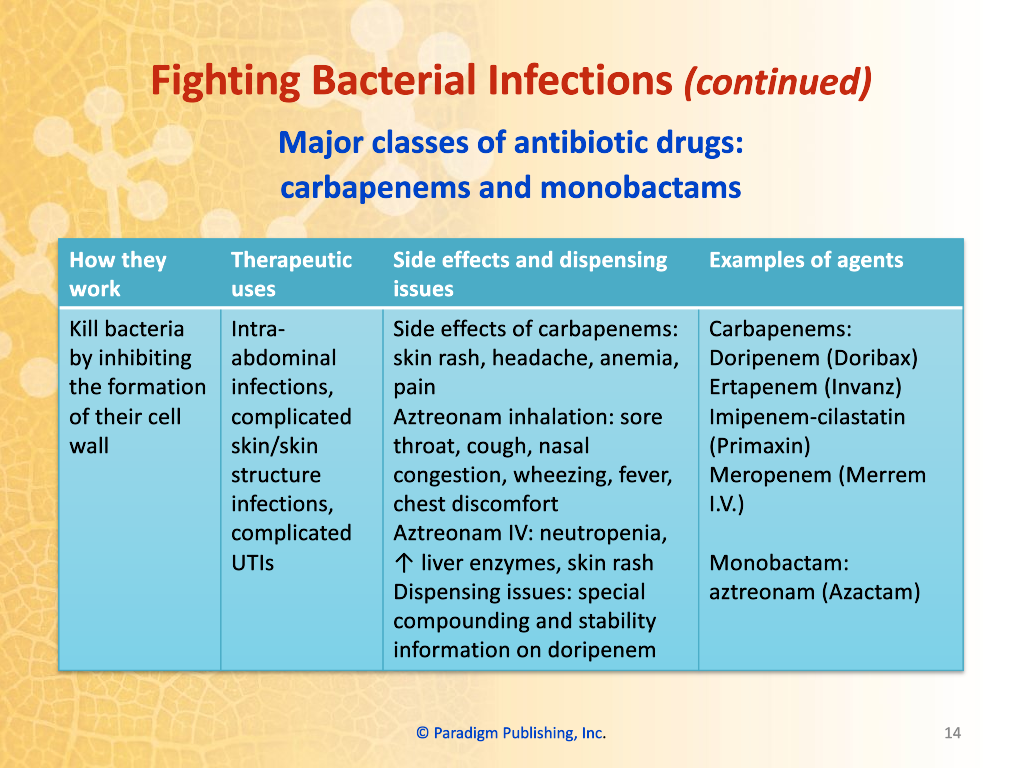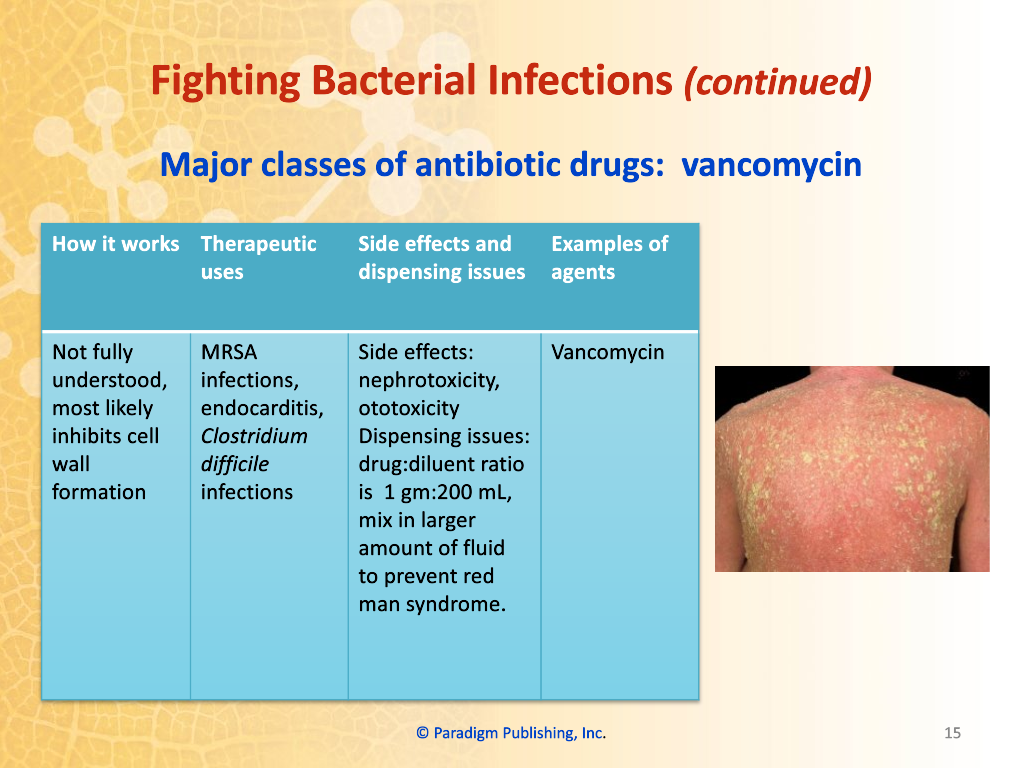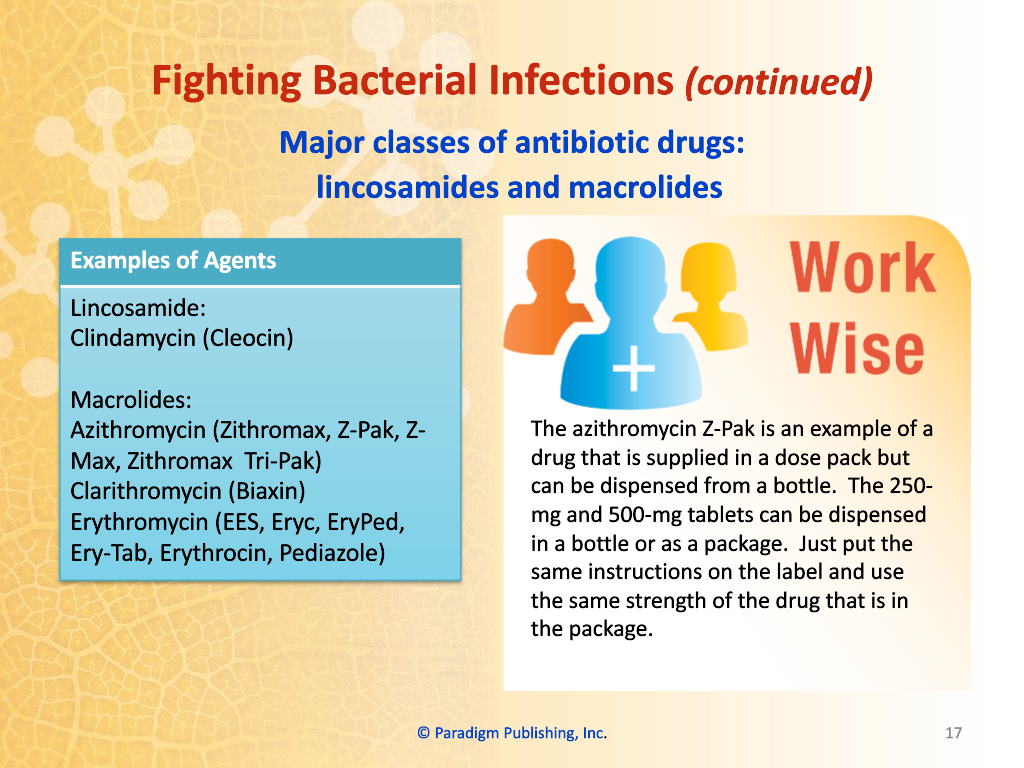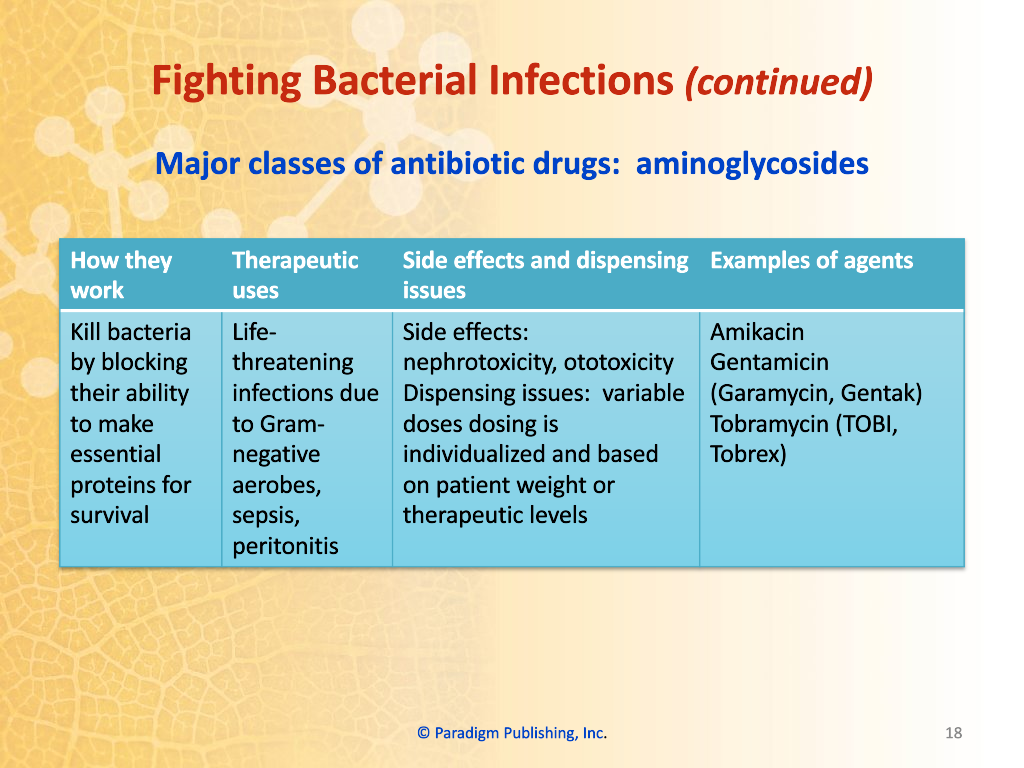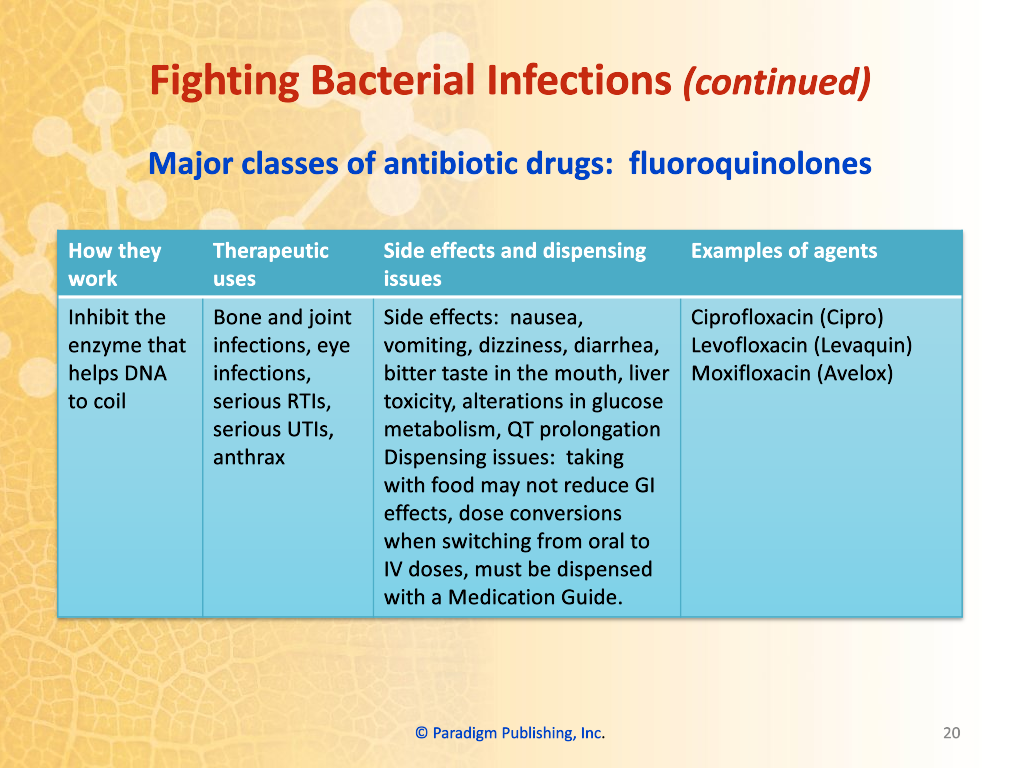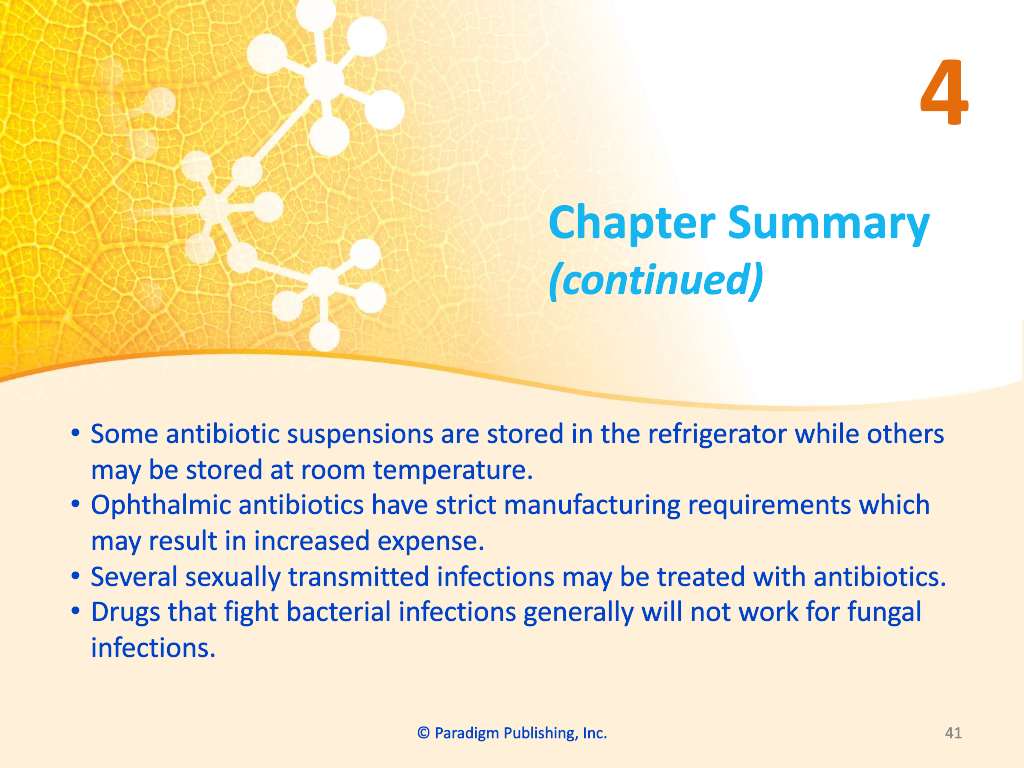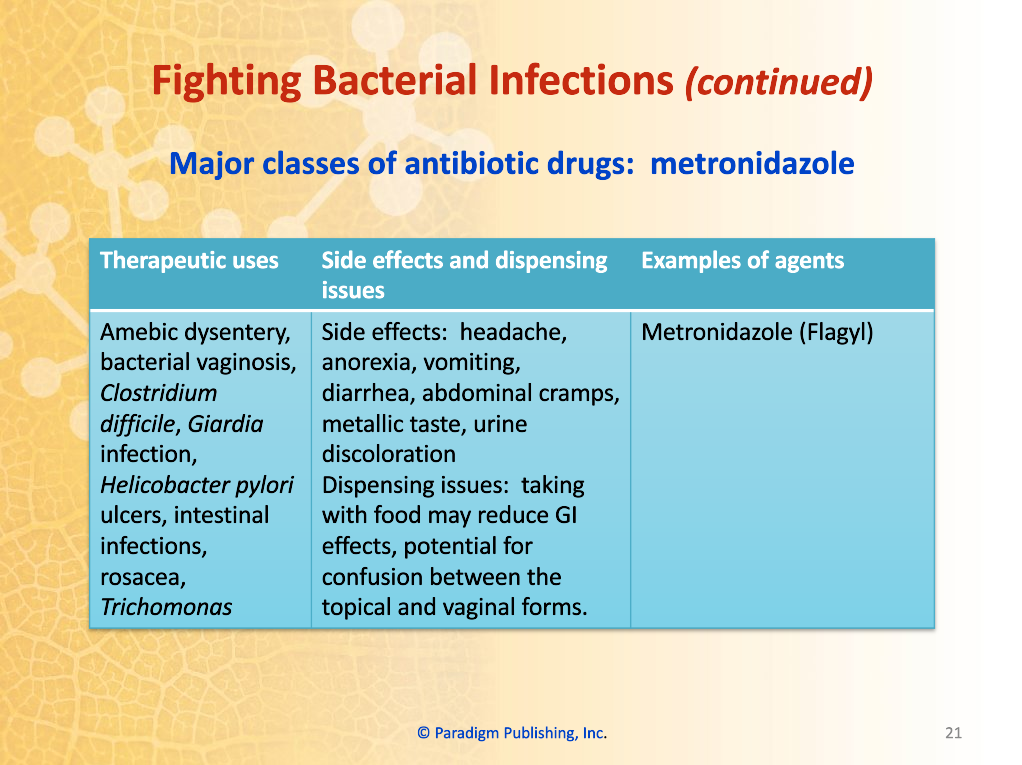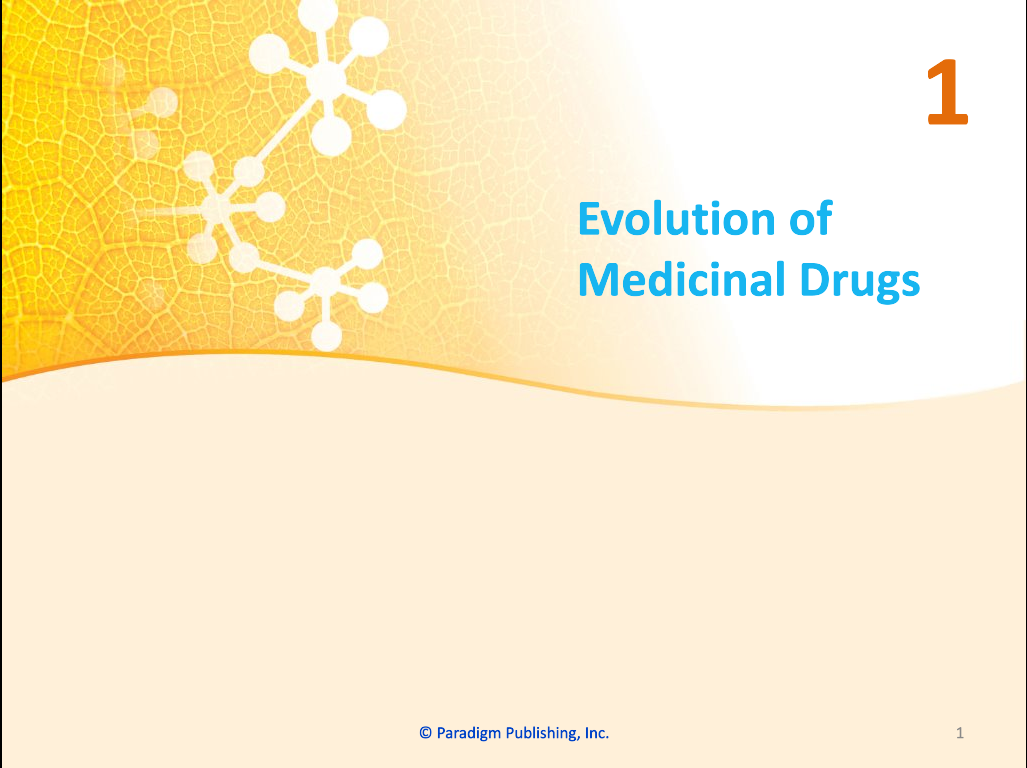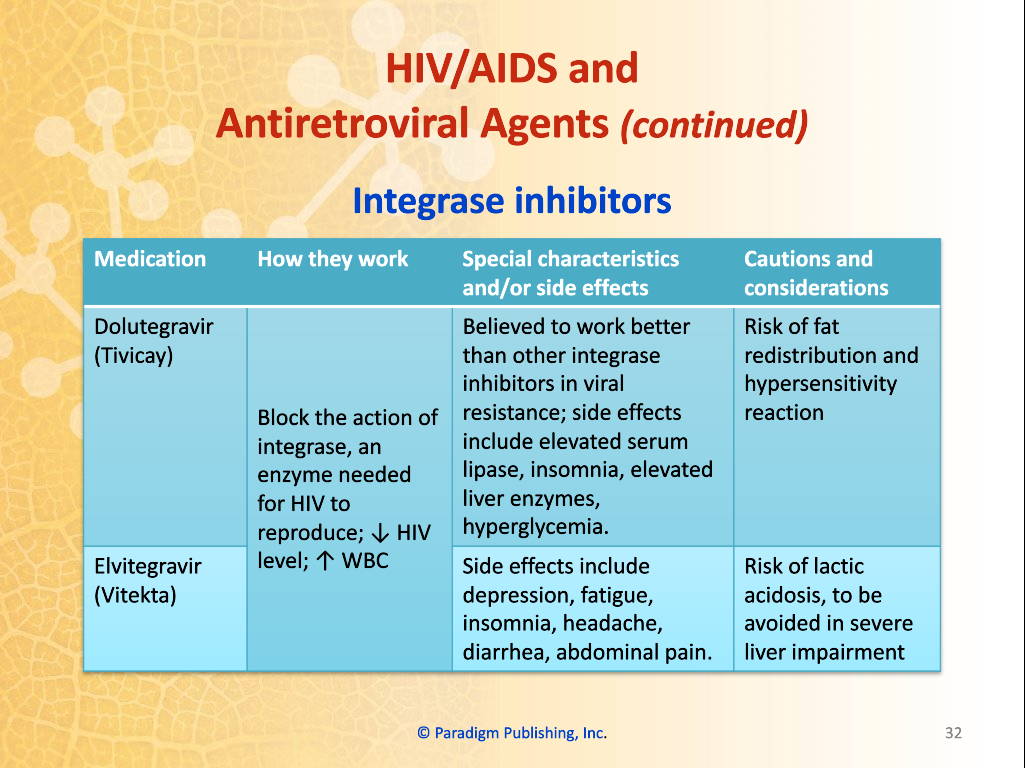Pharmacology - Chapter 4 - Antibiotics and Antifungals - Part Two
Transcription under the cut!
Fighting Bacterial Infections
Major Classes of Antibiotic Drugs: Penicillins
Examples of agents
- Amoxicillin (Amoxil, Moxatag)
- Ampicillin
- Penicillin G
- Penicillin V (Pen VK)
- Dicloxacillin
- Nafcillin
- Oxacillin
- Piperacillin
- Ticarcillin
- Amoxicillin-clavulanate (Augmentin)
- Ampicillin-sulbactam (Unasyn)
- Piperacillin-tazobactam (Zosyn)
- Ticarcillin-clavulanate (Timentin)
Safety Alert
- Up to 10% of patients in the US report penicillin allergies. Although true penicillin allergies are serious and can be life-threatening, many self-reported allergies are in fact adverse drug reactions and not an allergic reaction. If you are taking a patient history, specifically ask what his or her reaction is to the offending agent.
Major Classes of Antibiotic Drugs: Cephalosporins
- How they work: Kill bacteria by inhibiting the formation of their cell wall
- Therapeutic uses: Depending on generation of cephalosporin: dental work, oral infections, surgical prophylaxis, upper respiratory tract and sinus infections, UTIs, meningitis, intra-abdominal infections
- Side effects: nausea, vomiting, diarrhea, headache, dizziness, mental disturbances, seizures, heart palpitations, bleeding abnormalities
- Dispensing issues: allergies, high sugar content of cefdinir suspension, refrigerate suspensions except cefdinir and cefixime
Examples of agents:
- Cefazolin (Ancef)
- Cephalexin (Keflex)
- Cefaclor (Ceclor)
- Cefotetan (Cefotan)
- Cefoxitin (Mefoxin)
- Cefuroxime (Zinacef)
- Cefdinir (Omnicef)
- Cefditoren (Spectracef)
- Cefixime (Suprax)
- Cefotaxime (Suprax)
- Cefotaxime (Claforan)
- Cefpodoxime (Claforan)
- Ceftazidime (Fortaz, Tazicef)
- Ceftibutin (Cedax)
- Ceftriaxone (Rocephin)
- Cefepime (Maxipime)
- Ceftaroline (Teflaro)
Safety Alert
- Alert the pharmacist and prescriber if a patient who is allergic to penicillin is prescribed a cephalosporin. Even if the prescriber wants the drug dispensed, it is important to document this communication in case the person does have a cross-reaction.
Major Classes of Antibiotic Drugs: Carbapenems and Monobactams
- How they work: Kill bacteria by inhibiting the formation of their cell wall
- Therapeutic uses: Intra-abdominal infections, complicated skin/skin structure infections, complicated UTIs
- Side effects of carbepenems: skin rash, headache, anemia, pain
- Aztreonam inhalation: sore throat, cough, nasal congestion, wheezing, fever, chest discomfort
- Aztreonam IV: neutropenia, increased liver enzymes, skin rash
- Dispensing issues: special compounding and stability information on doripenem
Examples of agents:
Carbapenems:
- Doripenem (Doribex)
- Ertapenem (Invanz)
- Imipenem-cilastatin (Primaxin)
- Meropenem (Merrem I.V.)
Monobactam:
- Aztreonam (Azactam)
Major Classes of Antibiotic Drugs: Vancomycin
- How it works: Not fully understood, most likely inhibits cell wall formation
- Therapeutic uses: MRSA infections, endocarditis, Clostridium difficile infections
- Side effects: nephrotoxicity, ototoxicity
- Dispensing issues: drug:diluent ratio is 1 gm:200 mL, mix in larger amount of fluid to prevent red man syndrome
- Examples of agents: Vancomycin
Major Classes of Antibiotic Drugs: Lincosamides and Macrolides
- How they work: Block bacterial ability to produce needed proteins for survival
Therapeutic uses:
- Lincosamides: acne, dental work, anaerobic pneumonia, bone infections, bowel infections, female genital infections, intra-abdominal infections
- Macrolides: chlamydia, group A beta-hemolytic streptococcus, influenza, Legionnaire’s disease, mycoplasma pneumonia, streptococcus pneumonia
- Side effects: stomach upset, nausea, vomiting, heartburn, abdominal pain, diarrhea
- Dispensing issues: take with food, seek medical attention for severe abdominal pain or diarrhea, clindamycin used topically for acne
Examples of agents:
Lincosamide:
- Clindamycin (Cleocin)
Macrolides:
- Azithromycin (Zitromax, Z-Pak, Z-Max, Zitromax, Tri-Pak)
- Clarithromycin (Biaxin)
- Erythromycin (EES, Eryc, EryPed, Ery-Tab, Erythrocin, Pediazole)
Work Wise
- The azithromycin Z-Pak is an example of a drug that is supplied in a dose pack but can be dispensed from a bottle. The 250 mg and 500 mg tablets can be dispensed in a bottle or as a package. Just put same instructions on the label and use the same strength of the drug that is in the package.
Major Classes of Antibiotic Drugs: Aminoglycosides
- How they work: Kill bacteria by blocking their ability to make essential proteins for survival
- Therapeutic uses: Life-threatening infections due to Gram negative aerobes, sepsis, peritonitis
- Side effects: nephrotoxicity, ototoxicity
- Dispensing issues: variable doses, dosing is individualized and based on patient weight or therapeutic levels
Examples of agents:
- Amikacin
- Gentamicin (Garamycin, Gentak)
- Tobramycin (TOBI, Tobrex)
Major Classes of Antibiotic Drugs: Tetracyclines
- How they work: Inhibit protein synthesis within bacterial cells
- Therapeutic uses: Acne, anthrax, chronic bronchitis, Lyme disease, Mycoplasma pneumoniae infection, Rickettsia infection, chlamydia
- Side effects: upset stomach, nausea, vomiting, photosensitivity, permanent tooth discoloration
- Dispensing issues: may be taken with food, apply sunscreen, expired product may degrade and cause kidney failure
Examples of agents:
- Doxycycline (Vibramycin, Oracea, Adoxa)
- Minocycline (Minocin, Solodyn)
- Tetracycline (Sumycin)
Major Classes of Antibiotic Drugs: Fluoroquinolones
- How they work: Inhibit the enzyme that helps DNA to coil
- Therapeutic uses: Bone and joint infections, eye infections, serious RTIs, serious UTIs, anthrax
- Side effects: nausea, vomiting, dizziness, diarrhea, bitter taste in the mouth, liver toxicity, alterations in glucose metabolism. QT prolongation
- Dispensing issues: taking with food may not reduce GI effects, dose conversions when switching from oral to IV doses, must be dispensed with a Medication Guide
Examples of agents:
- Ciprofloxacin (Cipro)
- Levofloxacin (Levaquin)
- Moxifloxacin (Avelox)

